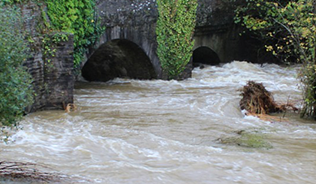Driven by human activities, the climate destabilisation and biodiversity loss emergencies pose an existential threat to wildlife, people and the planet. Our efforts to protect nature through conservation actions and environmental protection are proving insufficient. New approaches to how we view and interact with nature are required if we hope to halt and reverse the negative impact we are having.
Today, on World Wetlands Day, it is appropriate to consider what is happening to wetlands and how we can alter the current situation.
Wetlands are a key ecosystem for our survival but provide a depressing example of how things have gone so wrong for our planet and how existing strategies have failed. Although now only accounting for around 6% of the Earth’s surface area, the diversity of life sustained by wetlands is disproportionately high, with approximately 40% of all known plant and animal species living or breeding in wetlands1,2.
Despite their importance, wetlands have seen extensive loss and degradation, with more than 80% of wetlands lost compared to 70% of terrestrial area transformed, and 60% of oceans impacted1. This ecosystem loss and degradation has seen a decline in freshwater species populations of 83% on average since 1970, compared to 36% marine and 38% terrestrial3.
Wetlands have been lost through infilling and drainage for conversion to agriculture and urban settlements. They have been heavily degraded due to pollution, alterations to water regimes, fragmentation, and over-extraction of natural resources. Wetland loss and destruction has led to climate change and biodiversity degradation and loss.
This loss and degradation is despite the efforts to protect and conserve wetlands through the Ramsar Convention on Wetlands, as well as by governments and non-governmental organisations. The Ramsar Convention is 50 years old and is the only ecosystem specific intergovernmental convention. Although 172 countries have signed the convention and recognize the importance of wetlands to our planet, we have still experienced wetland loss and degradation on an unprecedented scale.
It has become apparent that existing approaches to conservation, restoration, and sustainable development have failed to shift the human-Nature relationship or halt consumption-oriented human behaviour that has led us to the brink of catastrophic climate destabilisation and brought on the 6th mass extinction, all of which is happening more rapidly than anticipated. We have little time left to change course.
For millennia and across cultures, people have recognized the Rights of Nature and elements of Nature as members of the Web of Life. Without this recognition of the living beingness of other Nature beings, a dualistic, mechanistic view of the human-Nature relationship predominates. The separation of humans from Nature and placing of humans above Nature has led to the current wetlands, biodiversity, and climate emergencies, with destructive and extractive use of wetlands and other elements of Nature. Alternatively, when humans are understood as being part of Nature, with wetlands and Nature having Rights, the human-Nature relationship is based on reciprocity, gratitude, and balance, including ethical responsibilities that people have towards Nature, as many Indigenous Peoples and local communities demonstrate and have demonstrated over time.
Rights and the living 'beingness' of Nature have been recognized throughout human history and globally across cultures, particularly by Indigenous Peoples and local communities. In response to global emergencies, a growing and paradigm-shifting global Rights of Nature movement articulates solutions that reframe the human-Nature relationship, shifting it from one of exploitation and depletion to one that embodies a relationship between Nature and humans based on reciprocity and a recognition of inherent rights.
Rights of Wetlands are part of a global Rights of Nature movement, which is transformative and shifts the globally-predominant paradigm that is responsible for endangering the well-being and continued existence of wetlands and other elements of biodiversity, including humans. The Rights of Nature paradigm shifts the human-wetlands relationship from one of exploitation, extraction, and depletion to one that recognizes the Rights and living 'beingness' of wetlands, and embodies a relationship between wetlands and humans based on reciprocity, kinship, and gratitude.
Rights of Wetlands is about behavioural change whether that is through legal frameworks or through how communities and individuals interact with the wetlands they live next to or within.
The paper Towards a Universal Declaration of the Rights of Wetlands (see https://www.publish.csiro.au/mf/MF20219 and associated supplementary material https://www.publish.csiro.au/mf/acc/MF20219/MF20219_AC.pdf), prepared by the Society of Wetland Scientists Rights of Wetlands Initiative articulates the need for a Universal Declaration of the Rights of Wetlands and documents some of the recognition of the Rights and living 'beingness' of elements of Nature through history and across cultures. The paper makes the case for a paradigm-shifting Rights of Wetlands approach, adding a wetlands-specific articulation of Rights that all wetlands inherently have. The Rights of Wetlands are:
- The right to exist
- The right to their ecologically determined location in the landscape
- The right to natural, connected and sustainable hydrological regimes
- The right to ecologically sustainable climatic conditions
- The right to have naturally occurring biodiversity, free of introduced or invasive species that disrupt their ecological integrity
- The right to integrity of structure, function, evolutionary processes and the ability to fulfil natural ecological roles in the Earth’s processes
- The right to be free from pollution and degradation
- The right to regeneration and restoration
[For more information and to sign the Declaration then please visit www.rightsofwetlands.org]
Change is needed now as time is of the essence if we are going to avert a disaster for our planet. Humans have an ethical duty to recognize the Rights of Wetlands, including the Rights of Wetlands and other elements of Nature to exist, to have a place to exist, and to fully participate in the Web of Life.
Legal structures for applying Rights of Nature already exist in many parts of the world, and they are being applied to wetlands in countries such as New Zealand, Colombia and Spain. These need to be more widely adopted at local and national levels. However, even without legislation companies and communities can themselves take, and are taking, actions to change their relationship with wetlands and embody a Rights of Nature behavioural change in their activities. A Rights of Wetlands approach is already being promoted and supported through cultural, educational, legal, and wetland management strategies to support long-term behavioural change but more is needed so that implementation of Rights of Wetlands can provide transformative change to achieve the future well-being and sustainability of life on Earth.
References
1 Kopf, R. K., C. M. Finlayson, P. Humphries, N. C. Sims, and S. Hladyz. 2015. Anthropocene Baselines: Assessing Change and Managing Biodiversity in Human-Dominated Aquatic Ecosystems. BioScience 65:798-811
2 Ramsar Convention on Wetlands. 2018. Global Wetland Outlook: State of the World’s Wetlands and their Services to People. Gland, Switzerland: Ramsar Convention Secretariat.
3 WWF (2022) Living Planet Report 2022 – Building a nature-positive society. Almond, R.E.A., Grooten, M., Juffe Bignoli, D. & Petersen, T. (Eds). WWF, Gland, Switzerland.
About the Author
Dr. Matthew Simpson (matthew@35percent.co.uk) is a director of 35percent, an independent wetland specialist consultancy, and has over 25 years’ experience in managing wetland-related conservation, research, assessment and management projects. Matthew is also Co-Director of the Cobra Collective that empowers marginalised communities through particpatory engagement approaches and innovative technologies.
Matthew has managed conservation, research, management and capacity building projects in Europe, Asia, Southeast Asia, Africa, South America and North America.
He is currently the President of the Society of Wetland Scientists Europe, an accredited Professional Wetland Scientist and recent President of the Society of Wetland Scientists Professional Accreditation Program. He is a committee member of the Constructed Wetland Association, a member of the Scientific & Technical Review Panel for the Ramsar Convention on Wetlands, a member of the Ramsar Wetland City Accreditation Independent Advisory Committee and a member of the International Association for Ecology’s Working Group on Wetlands which represents over 30 national and international ecological associations. He is also part of the Society of Wetland Scientists Rights of Wetlands Initiative.





